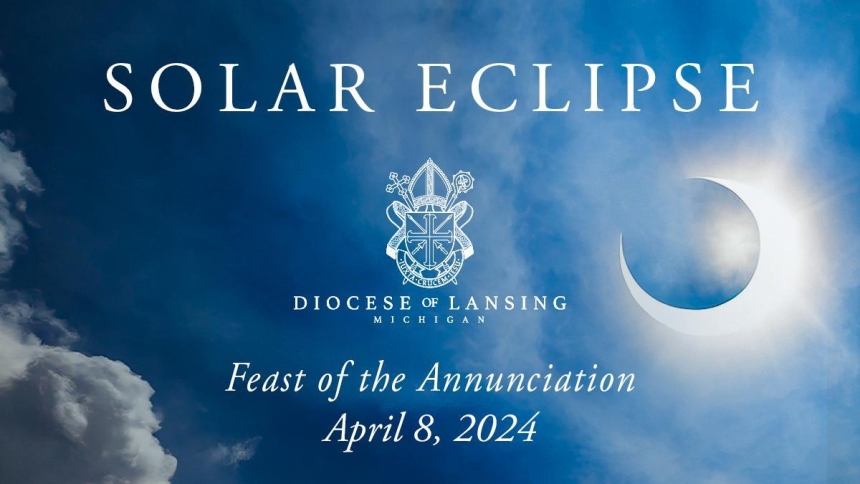
I was pleasantly surprised to learn that this year, due to the early Easter, the Feast of the Annunciation is April 8, which is also the date of the North American total solar eclipse of 2024, writes astronomer Dr. Timothy Dolch who is Assistant Professor in the Physics Department at Hillsdale College.
The coincidence of these two events doesn’t, of course, mean anything in and of itself. After all, a total solar eclipse is visible somewhere on the Earth every several years from somewhere, usually out in the middle of an ocean or from some other remote location.
Astronomers since the time of the ancient Greeks have been able to predict eclipses as natural phenomena. For me the events have a special connection because the Church proposes the event of the Annunciation, Mary’s "Yes" to the Angel Gabriel, as a turning point in salvation history.
Christ’s virginal conception was the beginning of a new humanity. Of course, this doesn’t exist in an abstract spiritual realm; it was a real event that happened to a real young woman at a particular time and place. For this reason, some Christian calendars used to recognize the Feast of the Annunciation, which is usually March 25 when not coinciding with Holy Week, as New Year’s Day!
We base our calendars on astronomical regularities (day from the Earth’s rotation, year from the Earth’s revolution about the Sun, month – “moonth” – from the moon’s orbit about the Earth…).
But we also have the week, the seven day cycle, which doesn’t correspond to any particular, regular astronomical cycle. That tells us that something about the significance of time comes from somewhere else, somewhere other than nature as we know it.
And the Annunciation is telling us that an event on humanity’s timeline was similarly mysterious, as mysterious as the creation of humanity. I think of witnessing my children’s baptisms; they’re truly second births, just as significant as their physical births, even though you can’t sense anything different about a child immediately after a baptism.
After Mary’s “Yes”, nothing about her ordinariness looked different. Even as Our Lord developed in her womb, there was an ordinary explanation for her pregnancy, an explanation that even Joseph considered before he experienced his mysterious dream. Even on the Cross, which we just mediated on during Holy Week, Jesus appeared ordinary, an appearance that compelled one thief to say “If you are the Christ, save yourself and us,” (Luke 23:39). But behind these events something of cosmic significance was happening.
This is all to say that through the Annunciation, humanity’s timeline was forever altered. Something truly new occurred over and above, but still within, the ordinary day-to-day rhythms and cycles of life.
For me, this alignment of the Annunciation and the North American total solar eclipse of 2024 reminds me that Christ has to do with everything. After my own baptism, marriage, and my children’s baptisms, I can honestly say that the 2017 total solar eclipse, which I viewed from Kentucky, was amongst the most moving several minutes of my life.
Yes, even though it’s predictable and repeatable, you can’t be in the path of totality, seeing the wisps of the Sun’s corona streaming off from it, and not think: You are behind this, You are giving this to me right now… “Behold, I make all things new.” (Revelation 21:5)
